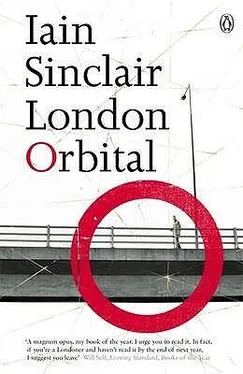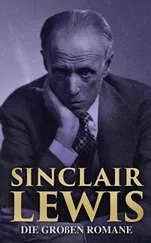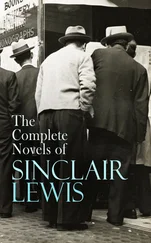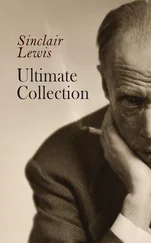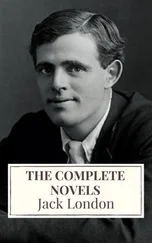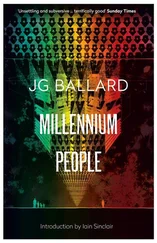The topography of these photographs is inscrutable. Working from Renchi’s album, it’s easy to understand what the day felt like, how it tasted and how the sky looked. But the squabble of road and rail and river is lost; the bleakness of Mar Dyke with its pylons and boggy fields.
We walked along the rim of chalk quarries that hadn’t yet been flooded to make a ‘water feature’ around which a business park could accumulate. We edged closer to the rebirth of the M25. Sound was panoramic, the full Dolby embrace: train-hiss, motorway whisper, planes following the river. Everything is at a distance — until, without warning, you bump against it: step into traffic, dodge hurtling metal, risk the hard shoulder, climb an embankment of newly planted trees in opaque plastic tubes.
Carfax. Quatre Face . The crossing of four roads. The traditional burial place for vampires. In psychogeographic terms, Junction 30 of the M25, the point where the motorway resumes its original identity, is the ultimate Carfax. Ten lanes of the M25 (north/south) violated by the rude east/west incursion of the A13. Their marriage mirrors the crossing of Thames and Queen Elizabeth II Bridge. Currents and countercurrents send vortices of energy swirling in every direction. Gangland rumours locate vanished London faces in concrete flyovers. Ginger Marks, Jack the Hat, Frank Mitchell. The vertical and unseeing dead don’t know which way to turn. Stage your protest on the gantry at Junction 30 and you’ll bring London to a standstill: north, south, east, west. The circulation of blood, the distribution of oil, the interaction of trance and fugue: the world thrown into chaos.
The TV news channels made it their lead item, when John Whomes, brother of Jack (gaoled for the Essex Range Rover Murders), occupied the gantry. To ensure that his demands were heard. (1) That his legal representatives should attend the ten-week hearing, the investigation into a case with many dubious elements. (2) That Jack Straw should ‘sit up’ and look at the facts laid before him.
Whomes, a softly spoken, meticulous man, stood on the bridge over the M25 in a bright yellow motorway maintenance jacket and gave interviews to hurriedly dispatched media folk on his mobile. The jacket had been painted with a statement of intent: FREE JACK WHOMES. INNOCENT OP RETTENDEN MURDERS. There was also a banner: FREE THEM NOW. Whomes was sturdy, shaven-headed, determined. His eyes protected by tinted spectacles. He had picked his spot with great care.
When I met him, in a deserted car park behind Rainham station, as part of a film about the M25, this is how he explained his choice of location:
I planned it for a lot of months. I drove up and down the M25, thinking of a position. There are only four positions where you can get up, cause a protest, and they can divert the traffic off the road and divert it back on.
On the morning that we actually went up there, we left home at five o’clock, got down there and had seconds to get up on the gantry — because we knew it was camera’d and the police would be on us.
A family friend, Peter, I’ve known since we were toddlers at school, he comes with me on all the protests. He’d come with me that morning because I wanted to get up that first twelve foot of the gantry, because the ladders are missing. He was going to help me and then go. And on the morning, we talked and talked about it, and it was a lovely day, he said, ‘I’m coming with you.’ And he stuck by my brother all the way through and he came up the gantry with me.
The Range Rover killings at Rettenden achieved acres of coverage. A sensational event treated in a sensational manner: bring back the rope for the scum who poisoned Leah Betts (screamed the tabloids). The broadsheets mused on the way that criminals had migrated to the suburbs and beyond. Upwardly mobile South London villains decamped into Kent, Kenny Noye to his estate in West Kingsdowne. Small fry (booze hauliers, pill distributors, doormen with attitude) took a fancy to Eltham, Swanley, the Isle of Sheppey. Customised bungalows. If you couldn’t make it to Spain, you could convert your semi into a hacienda: gin-palace motorcruiser parked on the patio. Pebbledash hutches with wall-sized Sony Trinitrons, American fridges, World of Leather sofas.
The M25 was exposed as a class barrier. Supergrass Roy Garner left Tottenham for a stud farm in Hertfordshire. The Krays acquired a substantial property in Suffolk. Chaps from Plaistow headed for Essex. Why not? Villains and cabbies. Getting away from: litter, sink schools, compulsory ethnicity. The motorway opened the whole thing up, rave culture, warehouse clubs (with girly names), cashmoney. Sacks of it. The three men who had their brains spattered over a Range Rover, down a farm track in Rettenden, were seen as necessary sacrifices. The inevitable consequence of adopting the diesel-corridor of the A13/M25 as a lifestyle choice: pills, noise, extreme violence. Transient derangement syndrome.
Crime changed. The job description. Old-timers (retired psychos, compulsive fabulists) said that they would never ever touch drugs. Then wolfed a pharmacopoeia of uppers, downers and inbetweens, while they operated their twilight heritage franchises from Maidstone or Parkhurst. Charlie Kray, always a businessman (so far as retro-tailoring could carry him), went down for the last time after being caught up in a £ 39 million cocaine trafficking scam.
Raquels in Basildon, in the bottleneck of the A127 and the A13, is where the action unfolded. Mention Basildon to Southenders and they’ll die of shame before admitting that they’ve set foot in the town. Even in photographs, Raquels looks like the punishment block of a military prison. Like an estuarine storage unit with crazy-serif calligraphy. Within the microclimate of ecstasy culture, random and restless mobility (Canning Town to Dagenham to Basildon to Billericay), it became apparent that there had been a major power shift: doormen were now the significant players. I don’t mean media-friendly performance artists like Dave Courtney (the cigar-infested skinhead from Bermondsey), but working stiffs like Bernard O’Mahoney (ghosted author of So This Is Ecstasy ?). O’Mahoney’s account, the background story to the Rettenden Murders, was subsequently filmed as Essex Boys.
The cover of Essex Boys , the film tie-in edition, places O’Mahoney alongside the three dead men: Tony Tucker, Pat Tate and Craig Rolfe. Any sane citizen would drive miles into East Anglia to avoid this quartet. You wouldn’t even want to inhabit the same universe. Ecstasy with steroid chasers. Coke to clear the head. Amphetamines to clear the room. O’Mahoney couldn’t sleep without his own brand of Night Nurse, a double dose of chlorpromazine.
After the ecstasy-induced death of Leah Betts, known to O’Mahoney from her visits to Raquels, the Basildon scene imploded: prison-toned crazies, with their cartons of loose cash, their runs to Holland, their big nights at the Epping Country Club, started to rip each other apart. Paranoia was the starting point. Drug psychosis. Bent associates. Bent cops. Bent landscape. Who did what to whom seemed less important than where they did it. Which motor they were driving. (‘Paranoid?’ said O’Mahoney. ‘I felt fucking quadraphonic.’)
Have a good look at the photographs in Essex Boys . And think about the circumstances in which they were taken. Compare and contrast with the gangland portfolios that dress Kray-era PR. Not a tie to be seen, shirts worn outside trousers, and even (forgive me, Ron) jeans. The Latino trash look is in part a gesture towards Marbella, in part a convenience: so that the shiv of choice can be easily accessed. O’Mahoney wasn’t a weapons freak, a long knife or bayonet usually sufficed. Indoors, his ordnance was pretty much what you’d need for keeping down mice: CS gas (‘purchased on a day-trip to France’), ammonia, gun hidden in the kitchen ceiling. He’d come home for a wash and brush up, after Ronnie Kray’s funeral, showing his respects, when the Old Bill turned him over. The gun had been acquired from a farmer ‘for use in killing vermin’. There were no bullets.
Читать дальше
